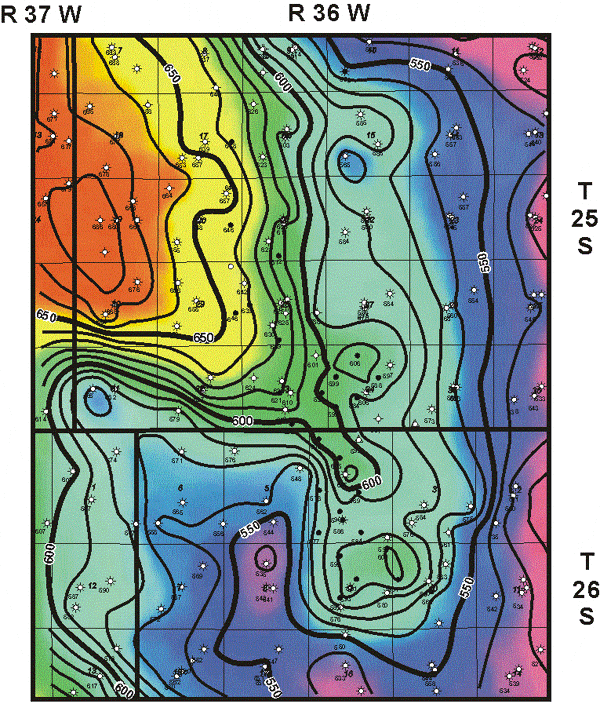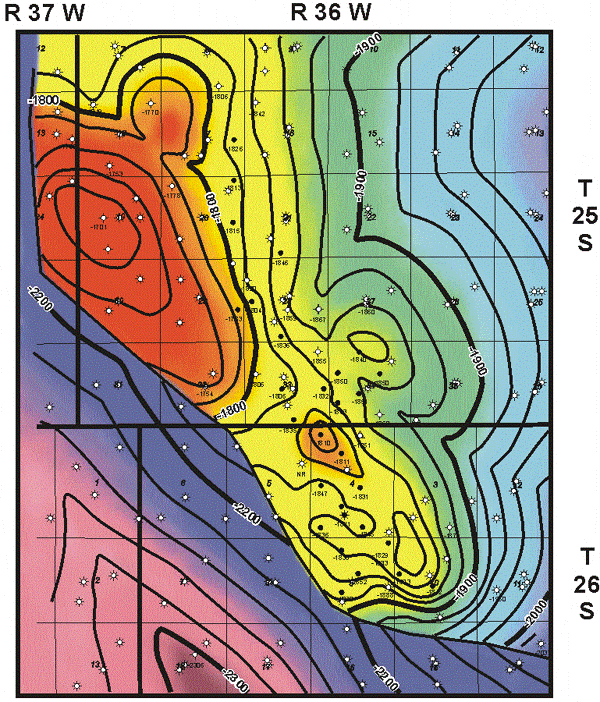
|
Depositional Model and Exploration Potential in the
St. Louis Carbonates Beneath the Hugoton Field of Kansas
|

Kansas Geological Survey
Open-file Report 2002-8 |
Pleasant Prairie Pool Study Model and Analagous Pool
Studies
Lakin Pool Complex
Description
T25S-36W Sections 28, 33-34
T26S-36W Sections 4, 9-10
Method of Exploration
The discovery well, Excelsior Oil, Schaffer #1, was drilled in
1957, on subsurface studies that showed that the location was
on an asymmetrical structural high plunging to the southeast.
This structural anomaly is part of an en echelon series of structures
that trends roughly northwest-southeast. The well's initial potential
was 185 barrels of oil with no water reported. Subsequent drilling
discovered Lakin South in 1975.
Nature of Trap
The St. Louis reservoir is a combination structural stratigraphic
trap that is producing on the down dip and east flank of a southeast
plunging structural nose. The St. Louis produces primarily from
the lower oolitic "C" zone with some minor contribution
from an upper "A" zone. Variations in production and
pressures is from a combination of structural and stratigraphic
segmentations from small faults and porosity permeability variations
in the St. Louis "C" oolitic shoal. The St. Louis reservoir
appears to have a solution gas and partial water drive.
Lithology of the Pay Zone
The pay zone is primarily from the St. Louis "C" zone,
which is an ooid-skeletal grainstone. The field complex has made
over 3,736,977 barrels of oil and has averaged approximately 170,000
BO/well.
 |
Winfield Structure
Contour Interval = 10 feet |
 |
St. Louis Structure
Contour Interval = 10 feet |
e-mail : webadmin@kgs.ku.edu
Last updated March 2002
http://www.kgs.ku.edu/PRS/Poster/2002/2002-10/P2-04.html


